That’s the beauty of paintings; you don’t have to be an art enthusiast to understand it. Every piece of art has the power to transcend time and boundaries and it will speak to you the way you want it to. Paintings are always interesting and their interpretations are even more so. Here are a few art pieces that created and changed histories in various parts of the world. Every month we introduce you to some famous artworks and try to bring out the aesthetic side in you.
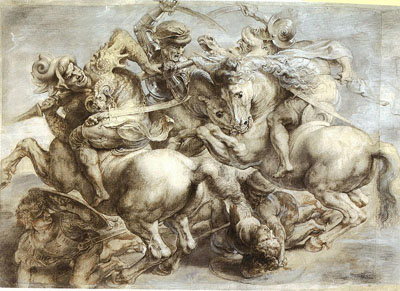
The Battle of Anghiari by Leonardo da Vinci, 1505
This is the lost painting by Leonardo da Vinci which also known as “The Lost Leonardo”. Many commentators believe that this painting, The Battle of Anghiari by Vinci is still hidden underneath one of the later frescoes in the Salone dei Cinquecento (Hall of the Five Hundred) in the Palazzo Vecchio, Florence. The painting magnificently depicts four men riding raging war horses at the Battle of Anghiari in 1440. In 1954 Leonardo Da Vinci signed a contract with Niccolo Machiavelli to decorate the Hall of Five Hundred. Michelangelo, his rival was designated the opposite wall and this was the only time Vinci and Michelangelo worked together.
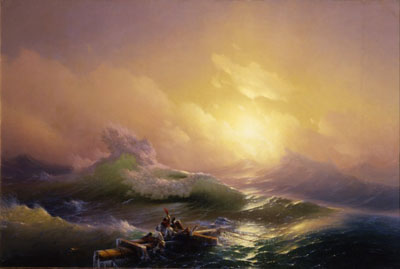
The Ninth Wave by Ivan Aivazovsky, 1850
Five works of art you should know

The Ninth Wave is the most famous painting of Aivazovsky. The painting is based on nautical tradition which believes that the waves grow larger and larger in a series up to the largest wave. The ninth wave is the point at which the series start again. Portraying the sea after a night storm, this painting depicts people facing death and attempting to save themselves by clinging on to the debris from a wrecked ship. Rich sky with warm tone is the highlight of this work of art, which is merged with the sea’s apparent perilous overtones. The destructive as well as the beautiful side of nature is reflected remarkably in this painting.
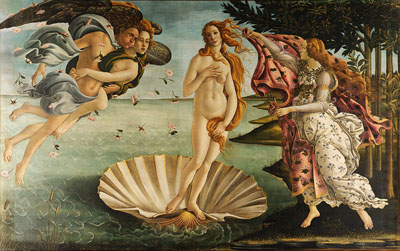
The Birth of Venus by Sandro Botticelli, mid 1940s
Sandro Botticelli made this painting depicting goddess Venus arriving at the shore after her birth in the mid 1940s. At the centre, the newly born goddess Venus stands nude on a giant scallop shell. The wind god Zephyr blows at her from the left with the winds shown by lines radiating from his mouth. Zephyr is also carrying a young female who is also blowing and their joint effort is pushing Venus towards the shore. At the right, there lies a female figure slightly above the ground holding a rich cloak or dress to cover Venus. Was Goddess Venus meant to arouse humans to physical love? Or was she the one who inspired intellectual love in them? One cannot be sure. Yet, this is one of the most famous paintings and icons of Italian Renaissance.
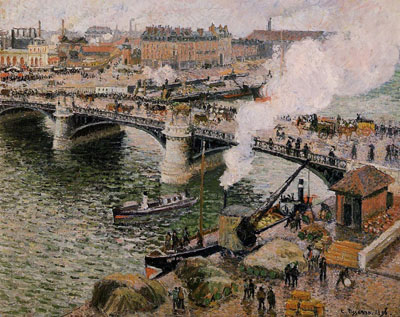
Point Boieldieu in Rouen, Rainy Weather by Camille Pissarro, 1896
Pissarro had spent time in Rouen during 1886 in an attempt to paint industrial modernity of that area. Boieldieu in Rouen, Rainy Weather is one of the series of painting Pissarro did of Pont Boieldieu and the industrial quayside surrounding it. The painting depicts how Pissarro was keen on moving beyond traditional landscape paintings of lush rural scenes. This is one of the very effective paintings that depict the anticipation and the delight of industrialization. More interesting is the freshness of the wet weather projected the painting with alive and spirited vehicles, pedestrians, and workers in the embankment.
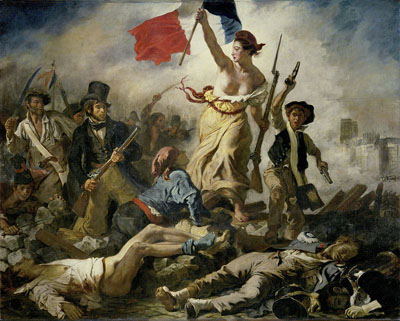
Liberty Leading the People by Eugène Delacroix, 1830
Delacroix in his painting Liberty Leading the People depicted a woman personifying the Goddess of Liberty. This is a painting commemorating the French Revolution of 1830, which overthrew King Charles X of France. Liberty here was projected as both an allegorical goddess figure and a robust woman of the people. The tricolor flag that she holds is the flag of the French Revolution which remains France’s national flag. This painting is viewed by many scholars as a mark of the end of the French Revolution and the start of the romantic era. The fighters in the painting are from a mixture of social classes, varying from students, bourgeoisie exemplified with young man in a top hat and revolutionary urban workers represented by the boy holding pistols.



































